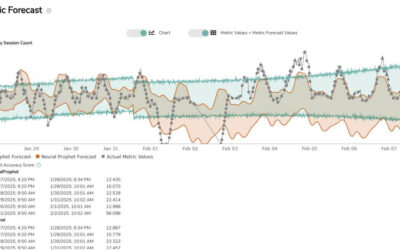
Executive Summary
Financial institutions such as investment services, wealth management, mortgage and brokerage firms are heavy document-centric businesses. Enterprise content management (ECM) / content services platforms (CSP) systems are an essential part of streamlining business processes for collecting, storing, accessing, and collaborating on both customer and company information. When content services go down or a bottleneck occurs, productivity and customer satisfaction can be negatively impacted and affect their bottom line.
With millions of customers and over 70,000 employees spread across the globe, an American-based global financial services institution needed to ensure the high availability of their business-critical content services applications. Their general purpose home-grown monitoring solution was not meeting expectations and required constant maintenance – creating a constant drain on internal resources. With thousands of distributed users, over a dozen Documentum sites and a transition to SharePoint Online in progress, the company needed a better solution for maintaining uptime, getting visibility into operating metrics and user activity, especially access to sensitive information, to support customers and employees.
The financial services institution’s ECM team went on the hunt for an enterprise solution that required less maintenance and could give them more out-of-the-box functionality to monitor application performance and content security across all of their content services. They also desired to leverage existing home grown incident management processes and trouble ticket methods.
Delivering Cross Platform Visibility for Documentum, SharePoint & SharePoint Online
Frustrated with their time-consuming and cumbersome home-grown solution the financial institution sought to find a solution that could give them the functionality they needed, without requiring months of development and customization. They found a solution to address their needs across their ECM platforms and incident management integration with Reveille.
Reveille offered them the agentless application monitoring and user analytics capabilities they were looking for with out-of-the-box functionality that could get them up and running in a much shorter time frame. Reveille’s monitoring capabilities could provide context and detailed insight into the application performance, adoption, user behavior, and provide security auditing for both their Documentum and SharePoint environments with a lot less effort and complexity than their existing solution. Once the decision was made, they were able to ramp up quickly with the help of the experienced Reveille services team, who they continue to leverage today.
To start, they focused on implementing Reveille to monitor the performance and adoption of their Documentum environment supporting CMIS based applications. They needed to understand the load on CMIS instances from both the actual user and robot generated activity perspectives. Reveille was able to show the detail for operating values for different instances of their application, memory, threads, sessions actively being used in each instance. It looks at each instance to see how each is operating (UA response times for transactions) to answer the question: Where within the stack is the problem originating? Reveille shows all of the ECM layers: user app, transaction, load balancer, content server, database, file systems to diagnose what layer or layers the problem is quickly.
With many content services applications, running Reveille’s user analytics also allows various teams to measure adoption and usage of each application instance. This information on usage is helpful as the company looks to decommission sites with little activity or move content to the cloud to gauge impact on users.
Moving Content Services to the Cloud
In addition to monitoring Documentum performance, the company is also transitioning sites from SharePoint on-premises to SharePoint Online. SharePoint is used frequently to collaborate on highly sensitive documents Reveille’s integration with SharePoint allows them to understand performance and adoption in the Cloud and ensure their SharePoint tenant environment is running smoothly. Additionally, Reveille’s granular transaction level user analytics allows them to keep track of who is accessing sensitive information for regulatory auditing and information security purposes.
Reveille helps protect against content access breaches by continuously monitoring for abnormal or suspicious access to sensitive data to detect, notify and speed the investigation of a breach to reduce its overall impact. Reveille can also automatically shut down suspicious windows domain user access based on conditions set by the business to stop an active breach by malicious insiders or hackers posing as your trusted insiders. It also provides audit and compliance reports with details on who, what, and when sensitive documents were accessed as part of the financial institution’s regulated business process to meet compliance requirements for SOX, GDPR Article 30: Records of Processing Activities, and other regulations.
Where to Next?
This global financial services giant has plans to expand the use case for Reveille to other areas of the business as they continue to evolve their environment and infrastructure to support both on-premises and Cloud content services. Reveille will continue to add value in the Cloud by helping actively see what performance getting out of it, as well as helping to protect the sensitive company information that is stored in their expanding digital asset repositories.



